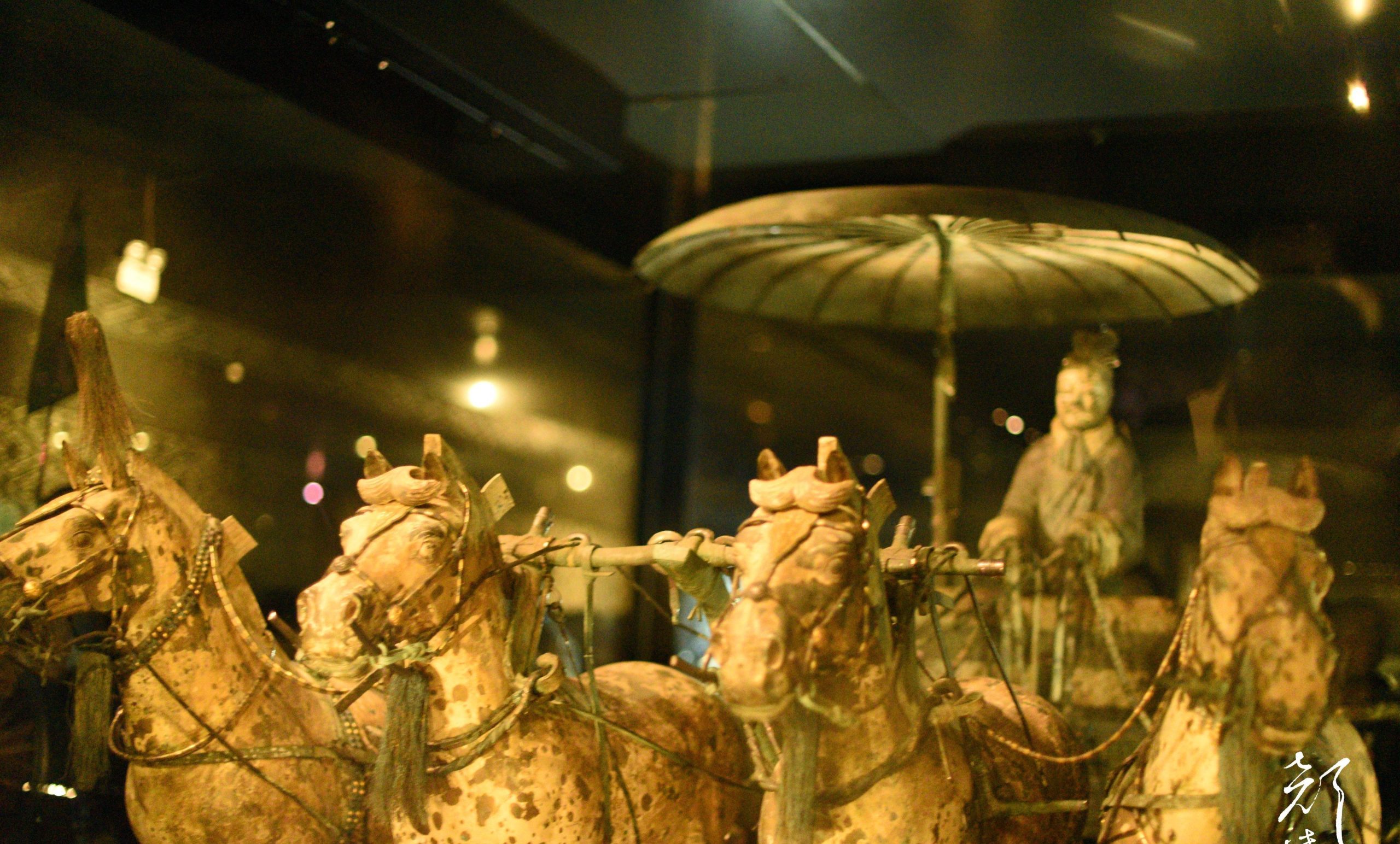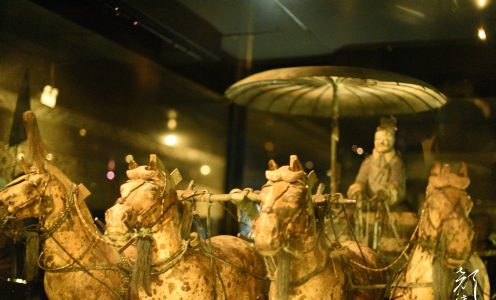Pit one
*detailed introduction of PIT 1 : click here
“Pit 1, one of the three main burial pits of the Mausoleum of the First Qin Emperor, was the first to be discovered and excavated.
Covering an area of about 14,000 square meters and approximately 5 meters deep, it is the largest of the pits found so far. Pit 1 symbolizes the imperial army of Emperor Qin Shi Huang and houses over 6,000 terracotta figures, along with numerous chariots and weapons. These life-sized figures, each uniquely detailed, represent the actual military formations and equipment of the Qin Dynasty, providing invaluable insights into the era's military practices and tactics. The meticulous craftsmanship of the figures, including their postures, attire, and armaments, closely follows the historical realities of Qin military forces, allowing modern viewers to glimpse the sophistication and grandeur of ancient Chinese military art.
Pit 1 of the Terracotta Warriors is an east-west rectangular pit, measuring 230 meters long and 62 meters wide, with five doorways on each side. The pit features long corridors on the east and west ends, and side corridors on the north and south sides. In the center are nine east-west passageways separated by rammed earth walls. This pit primarily consists of chariots and infantry arranged in a rectangular formation. The main army faces east, with warriors lining the south, north, and west corridors for protection and the eastern front rows acting as the vanguard.
After the exploration and trial excavation of Pit 1 concluded in 1975, the relics and artifacts were reburied to ensure their protection while constructing the site’s preservation hall. The construction began in May 1976 and was substantially completed by April 1978. The entire pit was divided into 27 excavation sections, each measuring 20 by 20 meters. The initial excavation focused on removing the topsoil covering the pit and clearing the eastern end.
The discovery and study of Pit 1 provide invaluable material evidence for researching the military, political, economic, cultural, and technological aspects of the Qin Dynasty. This pit showcases Emperor Qin Shi Huang's strategic genius in unifying China and the grandeur of the Qin Empire.”
Pit two
“Pit 2 is a crucial part of Emperor Qin Shi Huang's mausoleum. Discovered in the spring of 1976, it features a more complex layout and a more diverse range of troops compared to Pit 1 – including infantry, cavalry, chariots, and crossbowmen, forming a multi-unit special force formation. The discovery and study of Pit 2 provide important physical evidence for understanding the Qin Dynasty's military organization, tactical deployment, and terracotta figurine craftsmanship.
Pit 2 covers an area of about 6,000 square meters, half the size of Pit 1. Its plan is L-shaped, with an internal structure carefully designed according to different troop types, including crossbow formations, cavalry formations, chariot formations, and mixed formations of chariots, infantry, and cavalry. The pit includes a variety of troops, such as cavalry, chariots, and infantry (including crossbowmen), forming a multi-unit special force that showcases the composition and tactical deployment of the Qin Dynasty's army.
In Pit 2, it is estimated that over 1,300 terracotta warriors, 89 wooden chariots, and other bronze weapons will be unearthed. The excavation of these artifacts provides valuable material for studying the Qin Dynasty's military, culture, and technology.
Pit 2 is open to the public in a “simultaneous excavation and exhibition” format, allowing visitors to see the remains of the top structures and some of the unearthed terracotta warriors and horses. To protect these precious artifacts, a 17,000-square-meter exhibition hall has been built, making it one of China's largest and most fully equipped modern archaeological display halls.
The Terracotta Warriors in Pit 2 are not only an important part of the mausoleum of Emperor Qin Shi Huang but also a significant witness to ancient Chinese military history and cultural art. Through its study and display, we can gain a deeper understanding of the social life, military system, and artistic achievements of the Qin Dynasty.”
Pit three
“Pit 3 of the Terracotta Warriors is an integral part of Emperor Qin Shi Huang's mausoleum. Located to the west and north of Pit 1 and to the east of Pit 2, Pit 3 is approximately 25 meters from Pit 1 and 120 meters from Pit 2. It is shaped like a “凹” character, with an area of about 520 square meters, consisting of south and north rooms and a chariot and horse room. Although fewer terracotta warriors and horses were unearthed in Pit 3 (a total of 68), its significance lies in its unique status and the military information it reveals.
Pit 3 is believed to be the command center for Pits 1 and 2, representing a significant advancement in military tactics during the Qin Dynasty. The command center was separated to formulate precise combat plans and ensure the safety of the commanding generals. Notably, Pit 3 is the only pit that was not burned, preserving more of the original paint on the terracotta figures, providing valuable information about the craft and sculpture art of the Qin era.
The discovery of Pit 3 offers precious insights into ancient military tactics. Before the Spring and Autumn Period and the Warring States Period, commanding generals often led from the front. However, as warfare evolved, their position moved to the central army. In the Qin Dynasty, the separation of the command center marked a significant tactical development. Pit 3's discovery provides tangible evidence of this change in military strategy.


